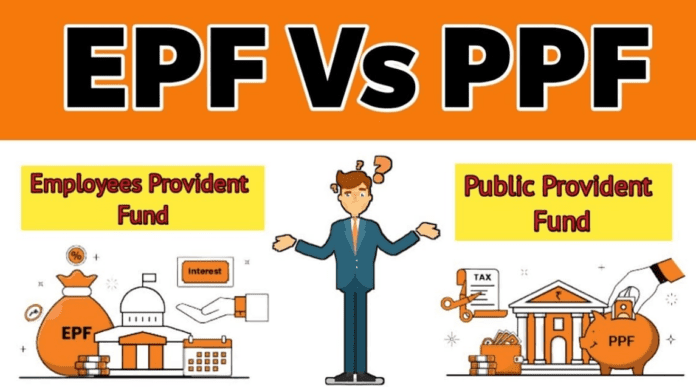EPF vs PPF comparison: Both EPF and PPF are long term investment vehicles. EPF is for people working in private companies. To invest in PPF, it is not necessary for a person to be a private or government employee. A person can open a PPF account and make long term investments.
PPF is at the top among the investment instruments used for retirement planning . This is part of the small savings schemes of the government. Since it is a government scheme, people trust it a lot. By investing in the long term, with the help of this scheme, a good fund is created, which can be used to meet the needs after retirement. EPF i.e. Employee Provident Fund is also a medium for long term investment. Which of the two is more profitable to invest in? What should you invest in? Can both be invested together? Let us try to know the answers to these questions.
EPF for employees working in private companies
EPF is a retirement benefit scheme for people working in the private sector. This means that a person working in a private company invests in this scheme. Investment in this is not voluntary. It is mandatory for private employees to invest in it. Every month a part of the salary goes into the EPF account. In this, the contribution of both the employee and the employer (company) is equal. EPFO manages the EPF funds of people working in the private sector. It works according to the rules made by the government.
EPF is helpful in retirement planning
12 percent of the employee’s basic salary and DA is deposited in EPF every month. The employer also contributes the same amount to the employee’s EPF account. The Board of Trustees of EPFO decides the interest rate on the money deposited in EPF every financial year. He sends his proposal to the Finance Ministry. After the approval of the Finance Ministry, the interest rate is paid into the subscribers’ account. Employee’s contribution in EPF does not come under the purview of tax. When the employee retires, he gets the money deposited in his EPF account. Besides this he also gets pension. The interest rate of EPF for FY24 is 8.25 percent. The government has announced this recently.
Anyone can invest in PPF
PPF stands for Public Provident Fund. Anyone can invest in this savings scheme. This means that it is not necessary for a person to be a government or private employee to invest in it. There are two big benefits of investing in this. First, it is a good option for retirement planning. Second, there is tax exemption on investing in it. This reduces the tax liability of the person. However, in this scheme one has to invest continuously for 15 years. After that the investor gets the entire money along with interest. There is a facility to withdraw some money after five years. But, there are some conditions for this. There is no tax on the maturity amount. Currently its interest rate is 7.1 percent.
Investment can be made in both together
If you work in a private company, some part of your salary will be going to EPF. This is beneficial in terms of long term investment. If you want to do retirement planning then you can open a PPF account. This account can be opened in post offices and banks. PPF account can be opened with Rs 500. In this, tax deduction can be claimed by depositing a maximum of Rs 1.5 lakh in a financial year. About a dozen investment instruments come under Section 80C of the Income Tax Act, 1961. PPF is also included in them. In this way, a person working in a private company can invest in both EPF and PPF simultaneously.


